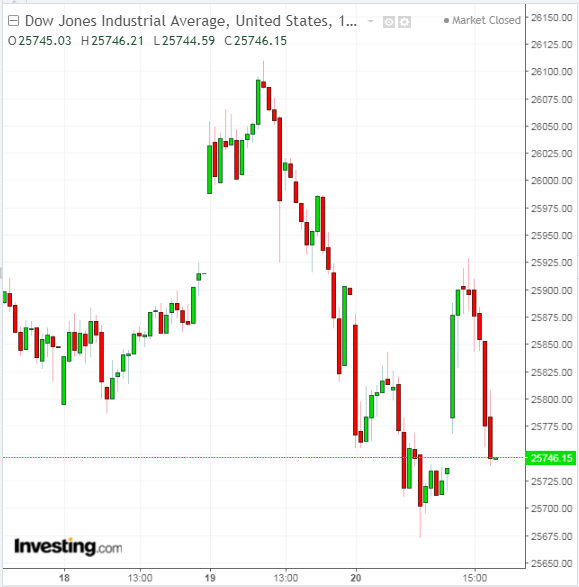Even as they lowered forecasts for growth and inflation and raised their projections for unemployment, U.S. Federal Reserve policymakers yesterday spelled out as much monetary accommodation as they could.
The majority expects no interest rate increases this year and only one over the next three years. The Federal Open Market Committee (FOMC) also decided to cut its runoff of its bond holdings in half in May, to $15 billion a month, and to end the runoff altogether in September.
None of this was a surprise since the Fed has been talking patience and an interest rate pause since its pivot in January.

But policymakers now seem to be leaning over backwards to accommodate the market and that—combined with the lowered forecasts—spooked investors a bit, sending the Dow Jones Industrials down 0.4 percent.
The takeaway for them appeared to be growth is slowing, and despite repeated assurances from Chairman Jerome Powell in his press conference that everything is fine and dandy, the Fed is worried.
This week’s meeting included the quarterly Summary of Economic Projections (SEP), forecasts from Federal Open Market Committee members that have recently become controversial. The famous dot-plot graph showed 11 of 17 policymakers expect the current benchmark interest rate of 2.25-2.5 percent will be the same at the end of the year. In 2020 and 2021, the majority sees the highest rate at 2.5 to 2.75.
Market participants are less optimistic. After the FOMC released its data, Fed funds futures pushed up the ante for a December rate cut, not hike, to 29.0 percent, up 7 points from the previous day and 11 points from the previous week, while the likelihood of maintaining the current rate plunged nearly 15 points in the week to 65.6 percent.
Meanwhile, the median forecast of the panel members for GDP growth this year was lowered to 2.1 percent from 2.3 percent in the projections last December, even as the range was lowered to 1.6-2.4 from 2.0-2.7.
Inflation, as measured by the Fed’s preferred personal consumption expenditure index, was forecast at 1.8 percent, down from 1.9 percent in December, while core inflation—stripping out volatile food and energy prices—was unchanged at 2.0 percent.
FOMC members raised their median forecast for unemployment to 3.7 percent from 3.5 percent, compared to 3.8 percent in February. “It may be some time before the outlook for jobs and inflation calls clearly for a change in policy,” was Powell’s dour comment at his press conference.
The chairman was at pains to say the projections—and particularly the dot-plot graph—are just one input into policymaking decisions. “They are not a committee plan,” he said. The panel considers various scenarios and individuals’ views will change from meeting to meeting.
The SEP was introduced in the wake of the financial crisis to reassure the public rates were on hold, but some now think they create confusion at inflection points like that faced toward the end of last year, when members may change their minds more often.
In response to a question, Powell said the balance sheet runoff, when it ends in September, would leave the balance sheet at about $3.5 trillion, which he said represents just 17 percent of U.S. GDP, down from 25 percent at the peak.
The FOMC specified it would gradually shift the composition of bonds toward a higher proportion of Treasury securities over mortgage-backed securities, allowing $20 billion of MBS to mature each month for reinvestment in Treasuries with a mix of maturities. But the panel will be tinkering with the ultimate level and the optimum composition over the meetings to come.
